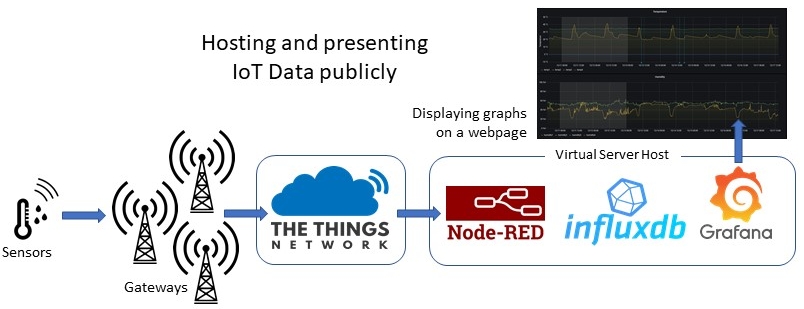Our project will develop, test, plan and deploy three sensors at each of our five libraries to measure microclimates across the City of Port Adelaide Enfield from the sea to the foothills.
It will provide the community with access to information about the microclimates in each location regarding temperature, humidity and CO2. This information will be available on a website where anyone may review live data trends in their local area and compare them with other areas.
This is a citizen science project which also involves the community and will provide open-source instructions for individuals, communities and schools on how to build and deploy similar sensors.
Background
Our IoT Experimenters group, with the support of our volunteers Paul Schulz, has been running workshops in IoT and Arduino, which is a widely available low-cost open-source electronics platform with a large worldwide community. We are also using LoRaWAN and the Things Network for sensor internet connectivity. As LTE Mobile Data Networks are price inhibitive for multiple sensors in multiple locations. Also, WiFi over distance, even using a CWN like Air-Stream Wireless, requires additional equipment, power and limited access. Public WiFi networks like at the Library also have user time limits and firewall protocols that prevent IoT devices from being connected.
With these things in mind, we have found the Arduino MKR WAN 1310 provides a practical low-power solution for connecting multiple sensors using LoRaWAN.
More details:
Project Overview: https://stemlibrary.space/microclimates/
Senor construction: https://stemlibrary.space/microclimate-sensor/
More details:
Project Overview: https://stemlibrary.space/microclimates/
Sensor construction: https://stemlibrary.space/microclimate-sensor/
Live microclimate data: https://stemlibrary.space/microclimate-data/
Hosting IoT Systems
Although monitoring IoT Data and displaying it as a graph is relatively straightforward on a DiY level by using free single-user cloud services such as Arduino Cloud or even using NodeRED installed on a home computer. Hosting sensor data publicly in a visually accessible way is more involved and has a cost associated.
A LoRaWAN-enabled sensor can connect to any or all The Things Network (TTN) gateways in an area where there are gateways in range. By creating a user account and registering the sensors’ access keys on the Things Network Stack application console where data from the sensor can be accessed over the internet.
Data on the TTN is not stored and so must be collected using a broker application and stored in a database. In the above example, we intend to use three open-source applications. NodeRED, which is used as the broker, influxdb to store sensor data. Then Grafana, which is an interactive visualization web application to provide charts, graphs, or alerts. Where individual live graphs and charts can be easily embedded on websites like this, screens in the libraries and shared on social media.

